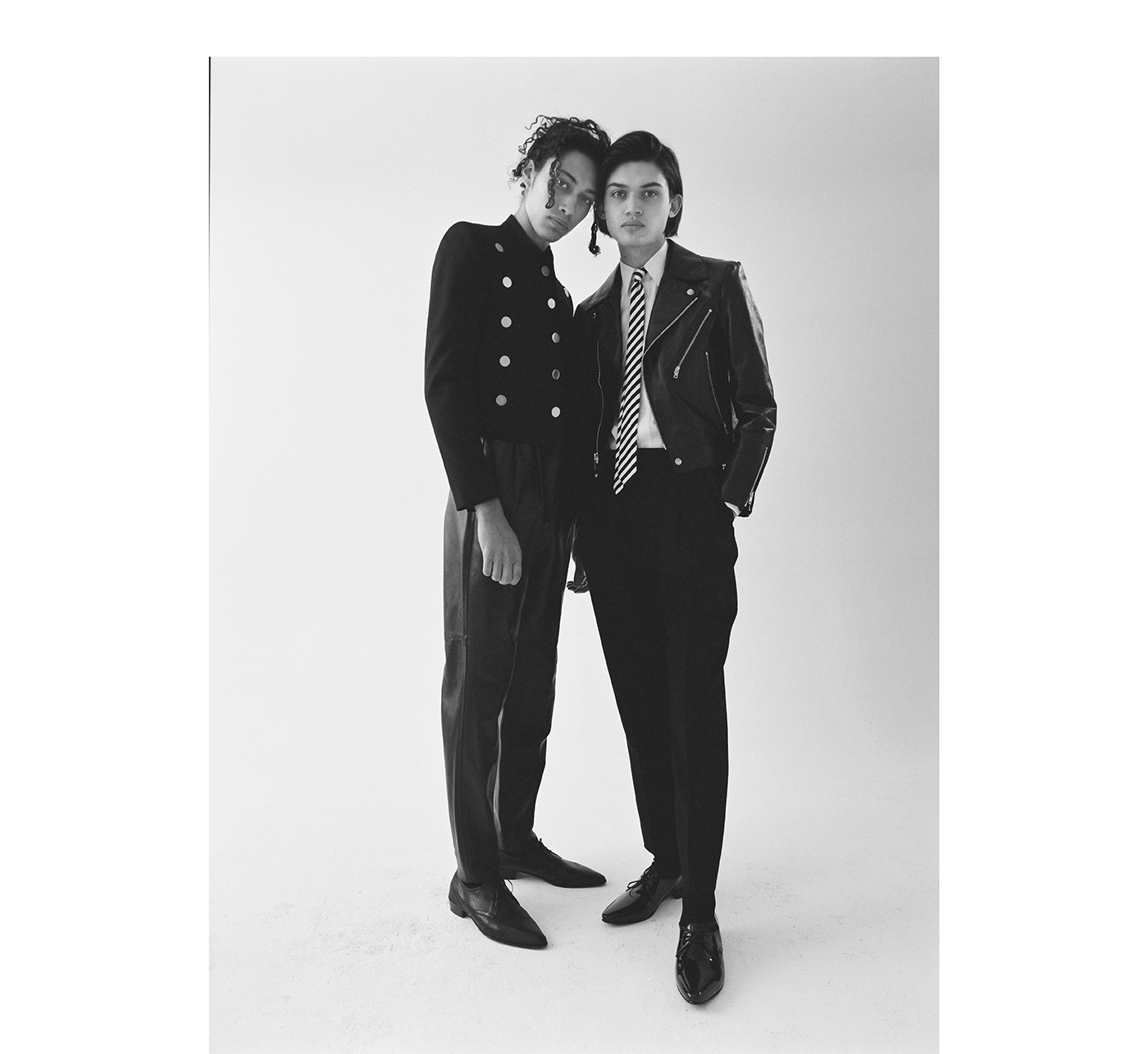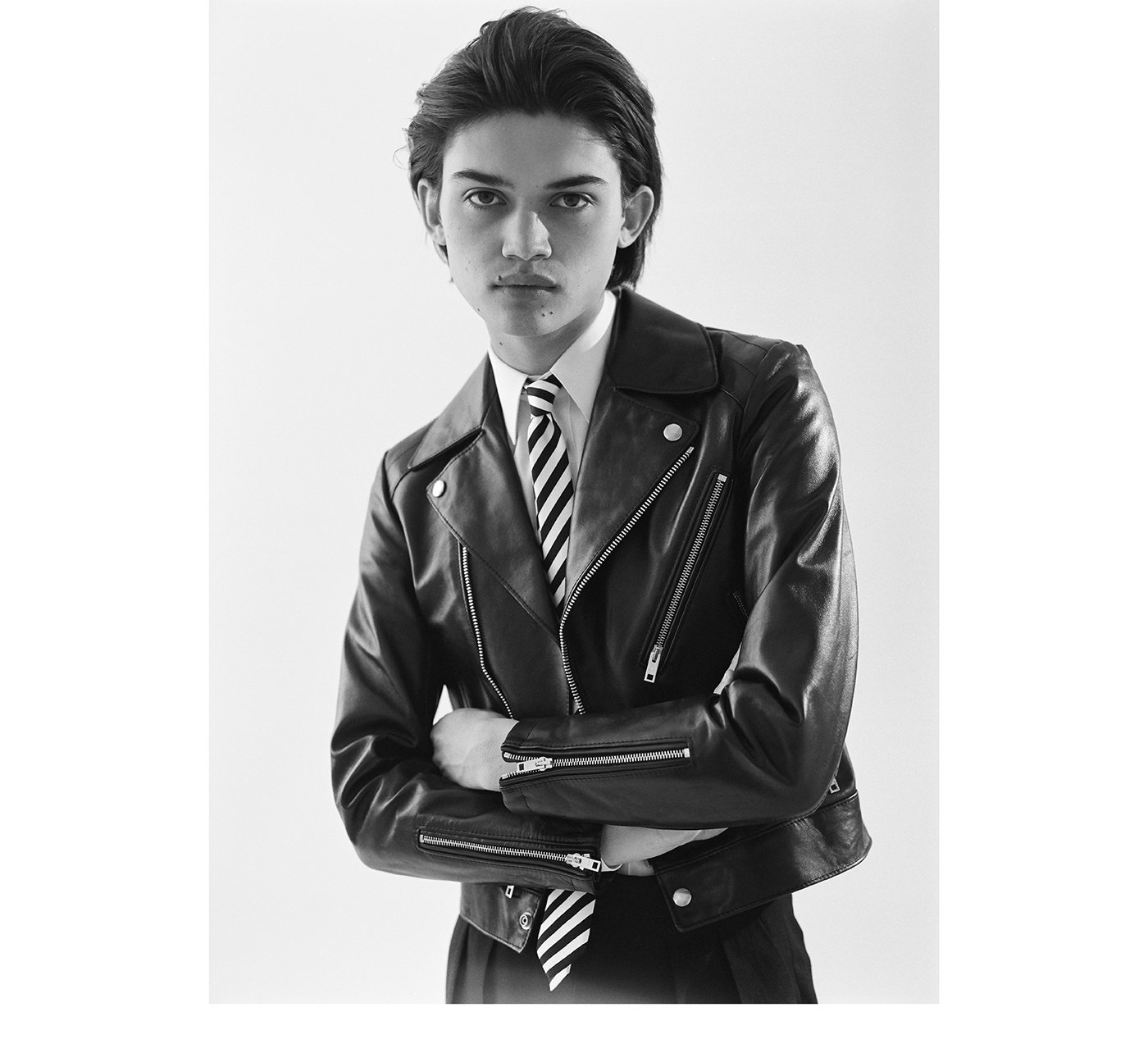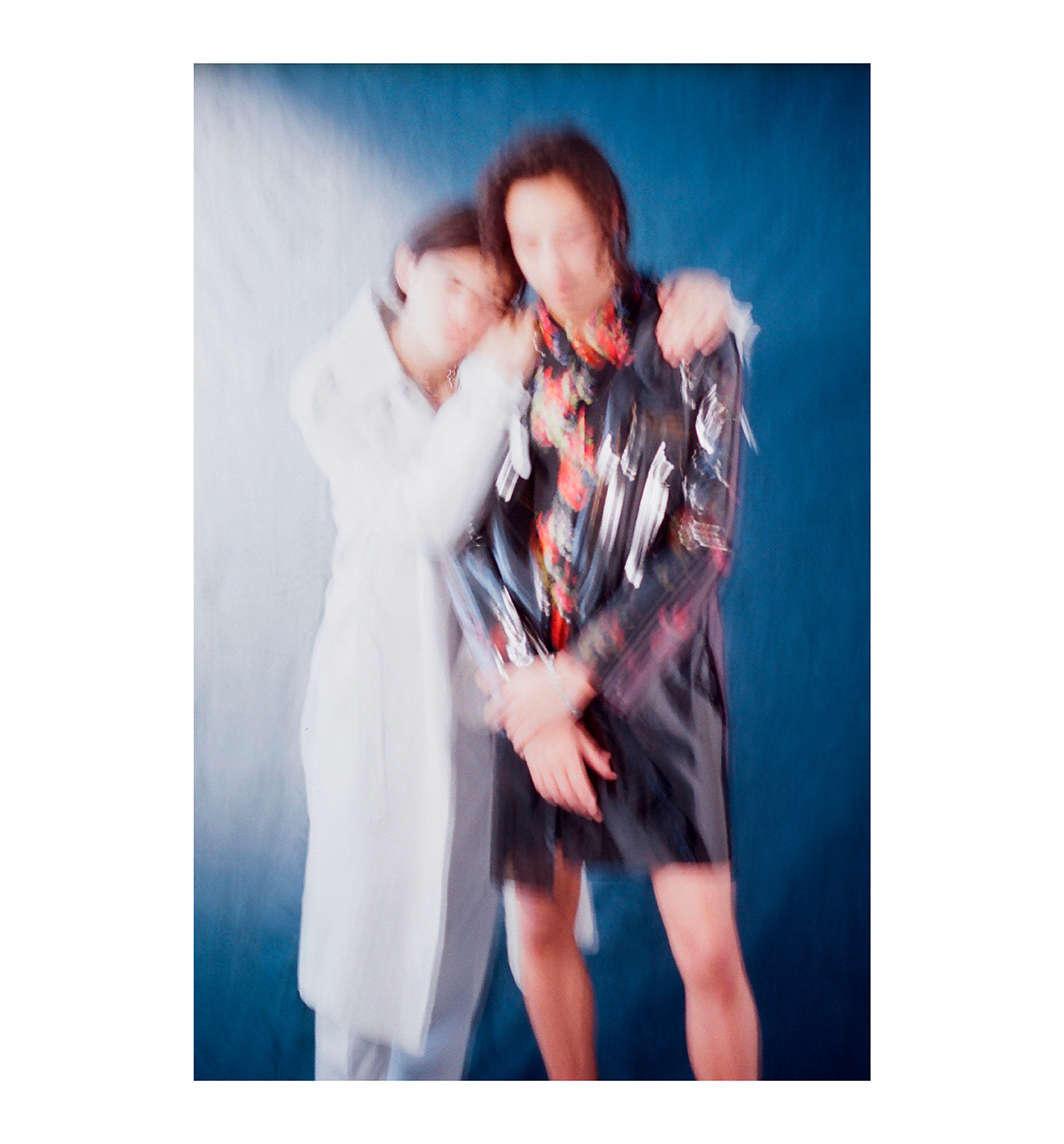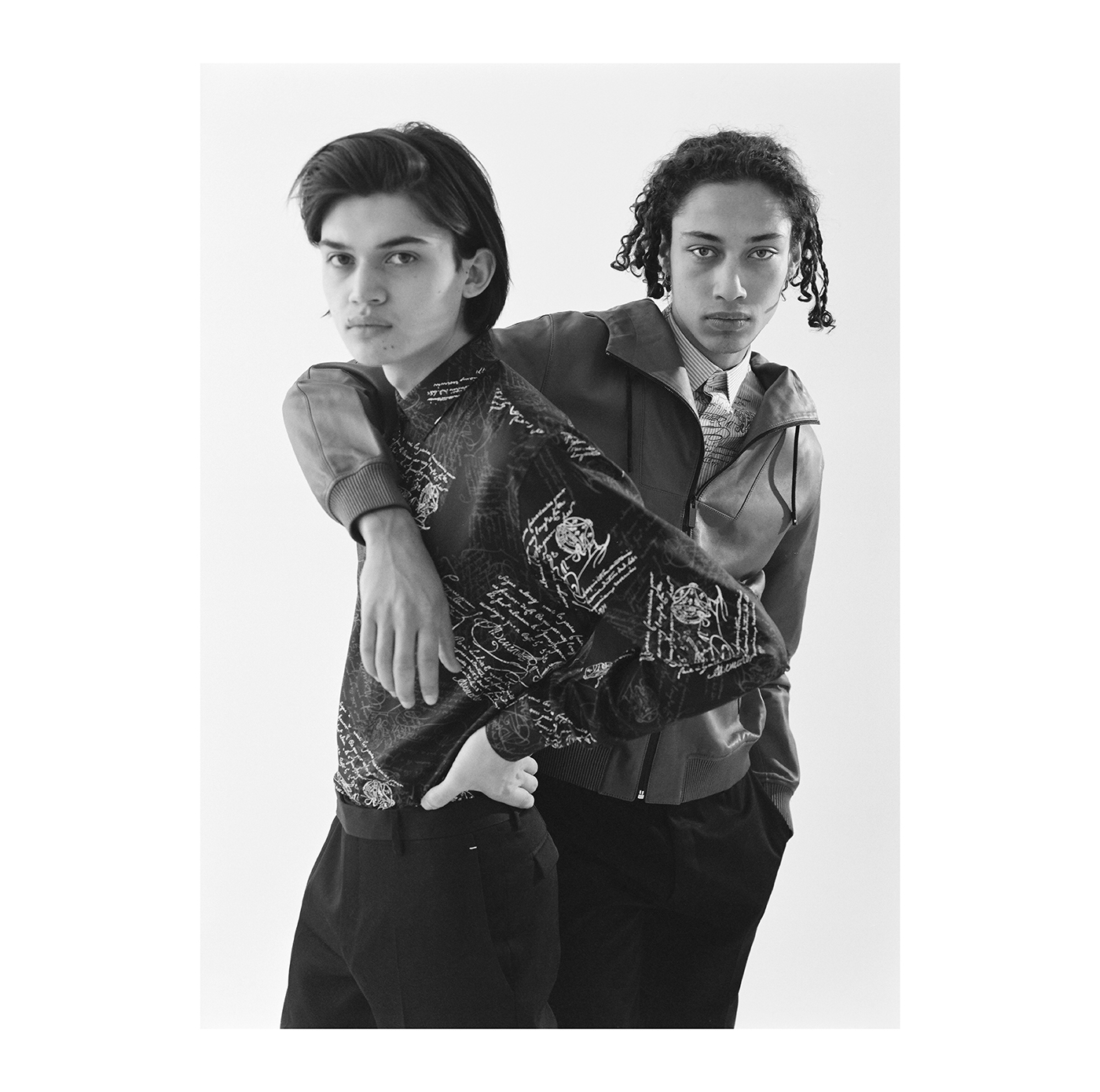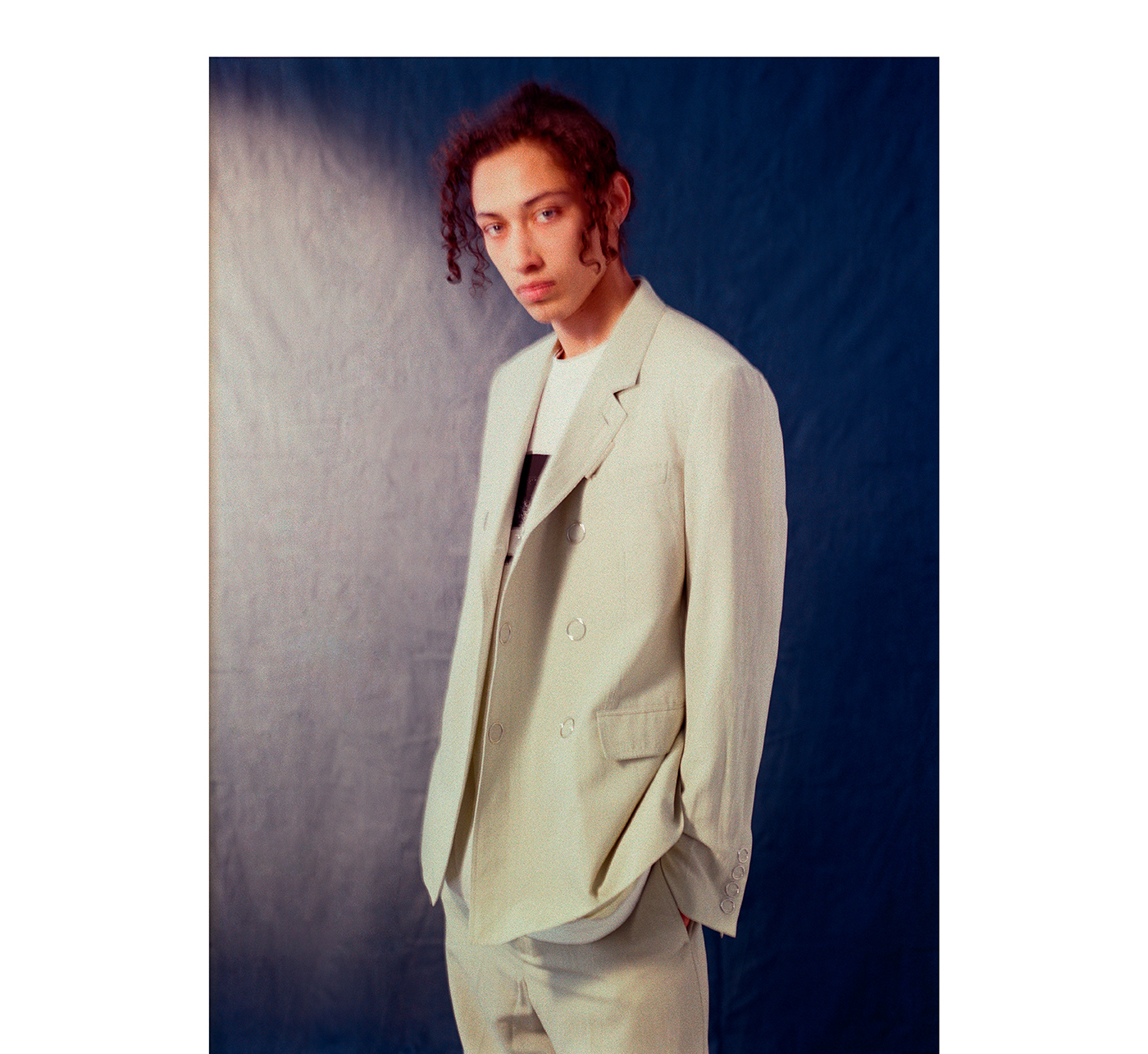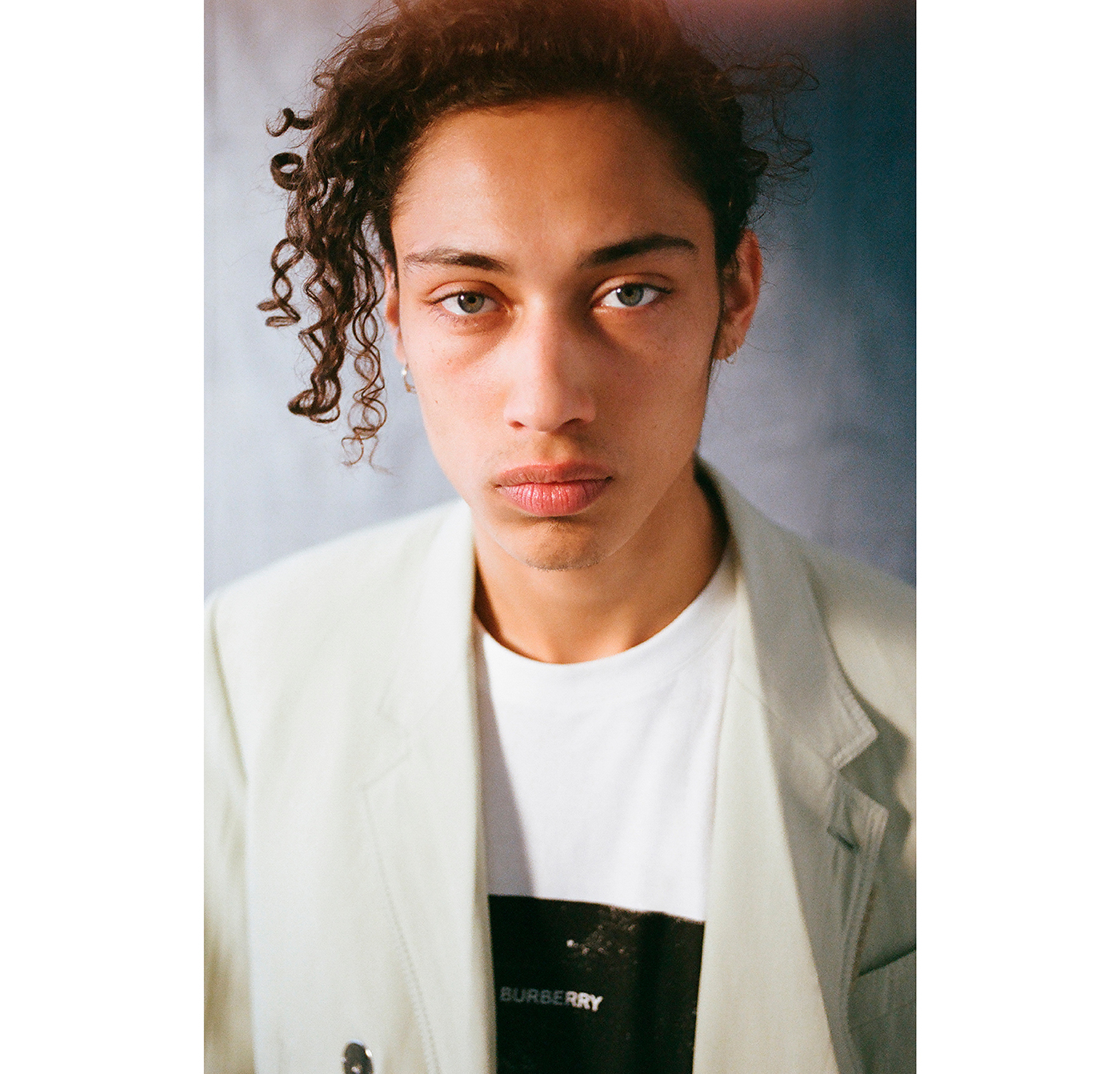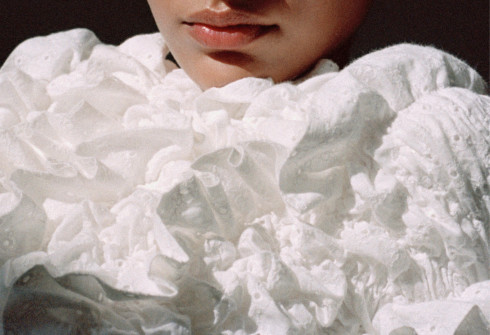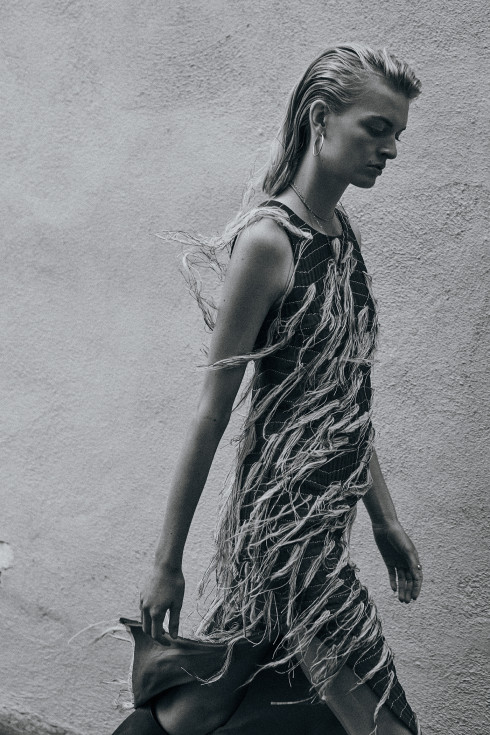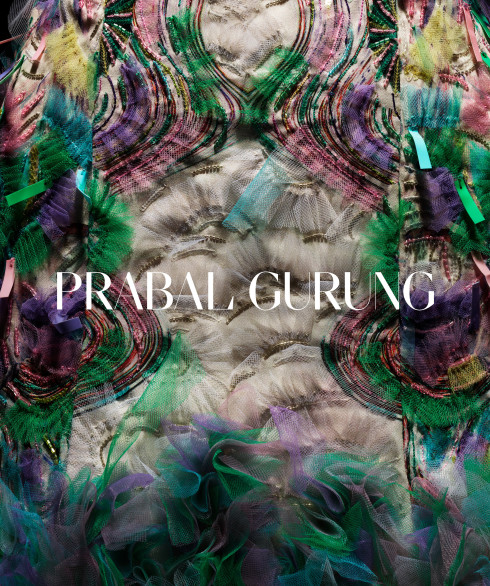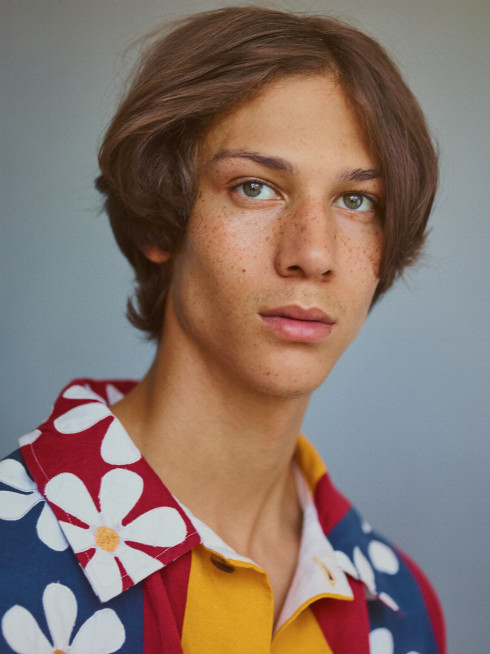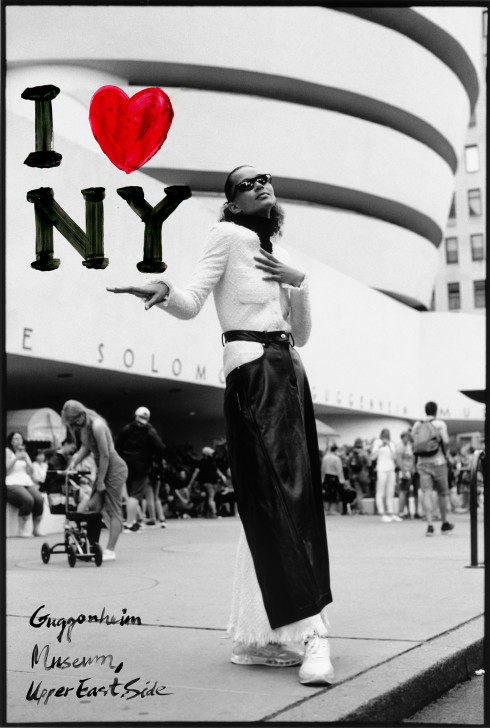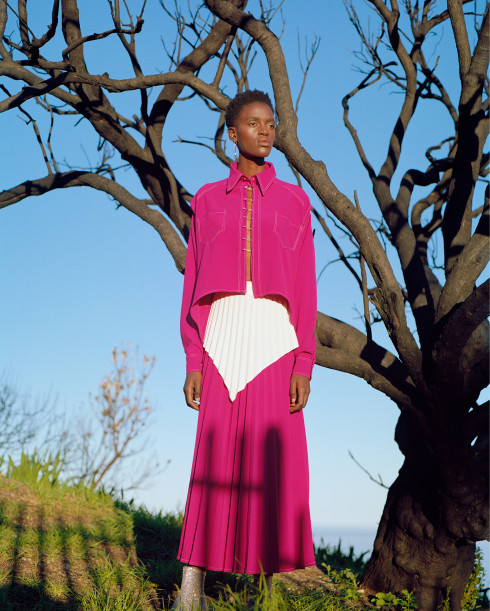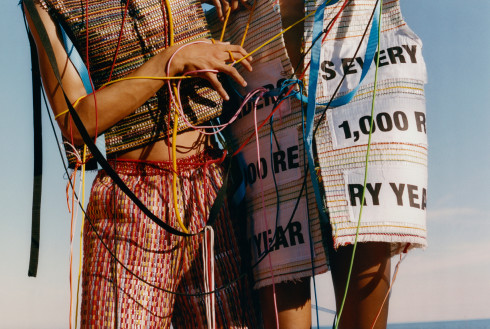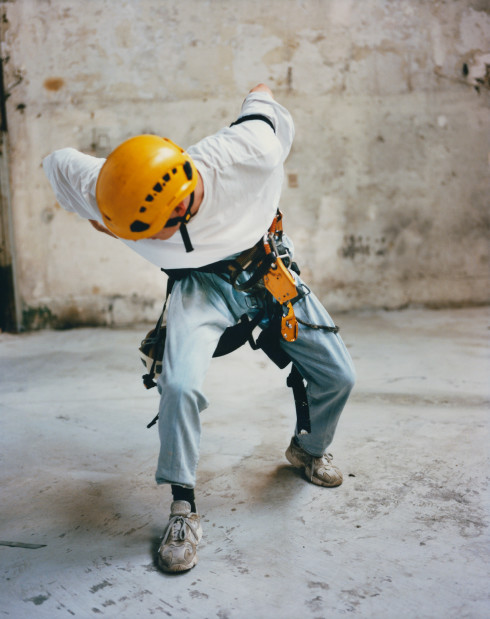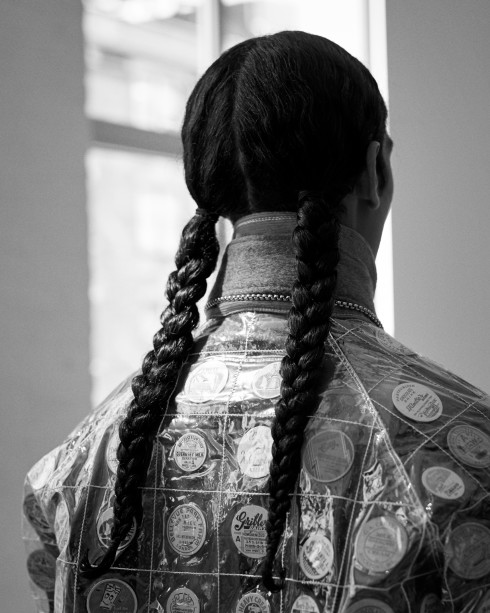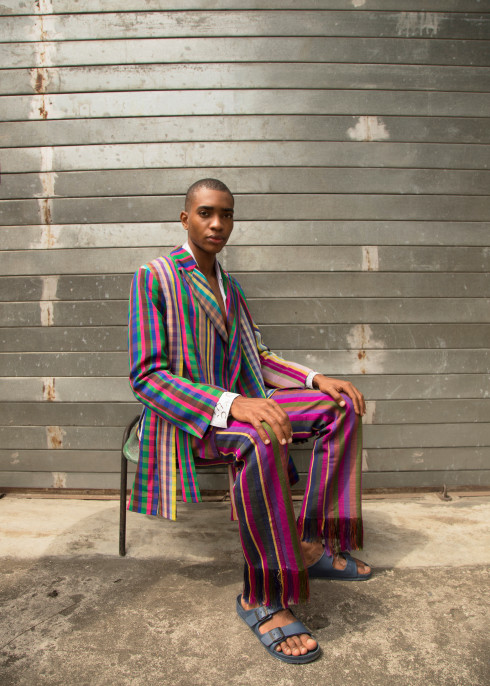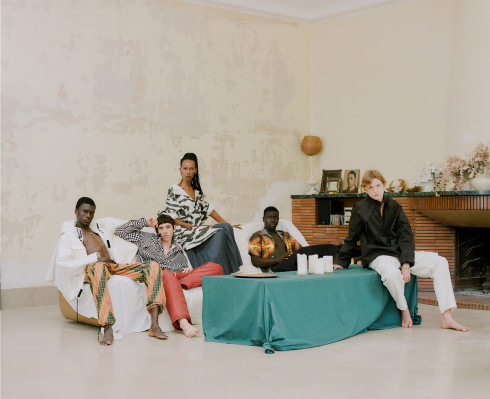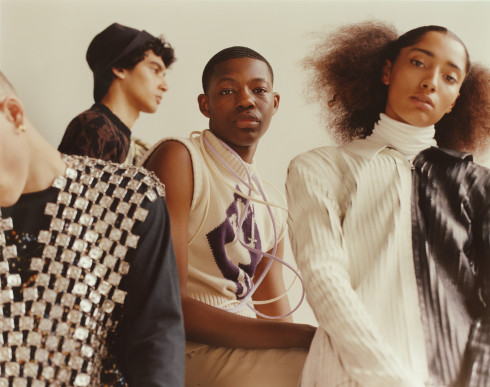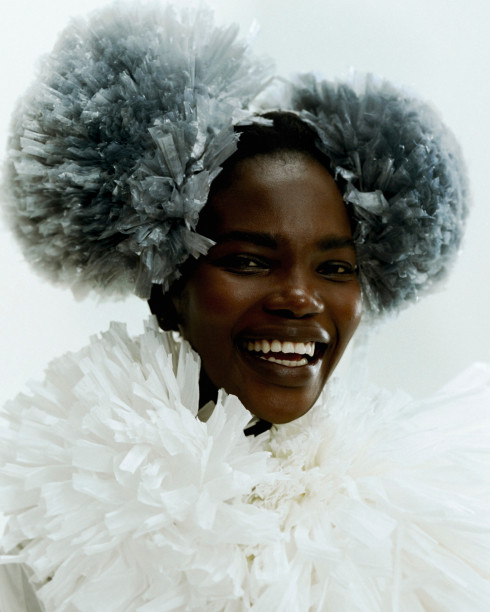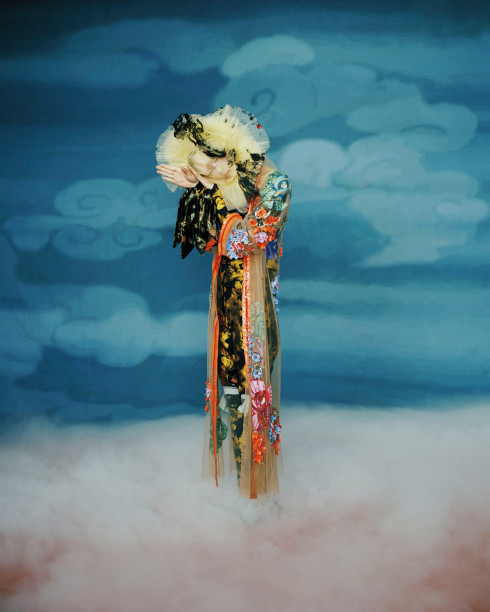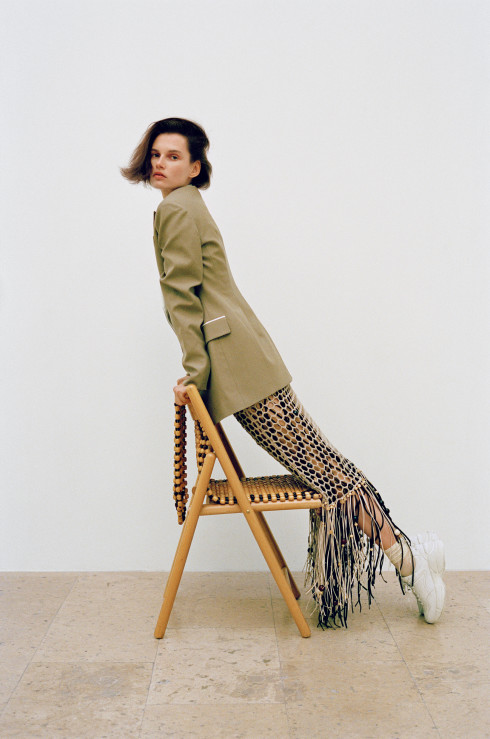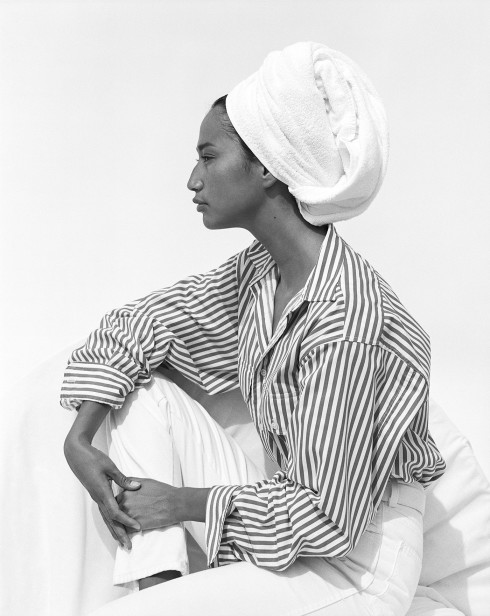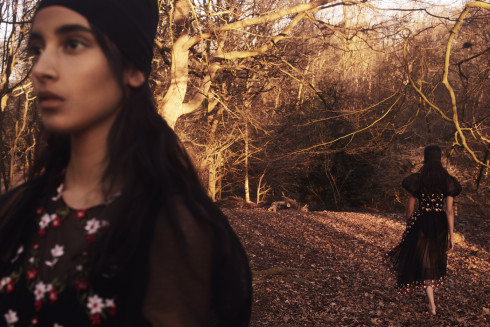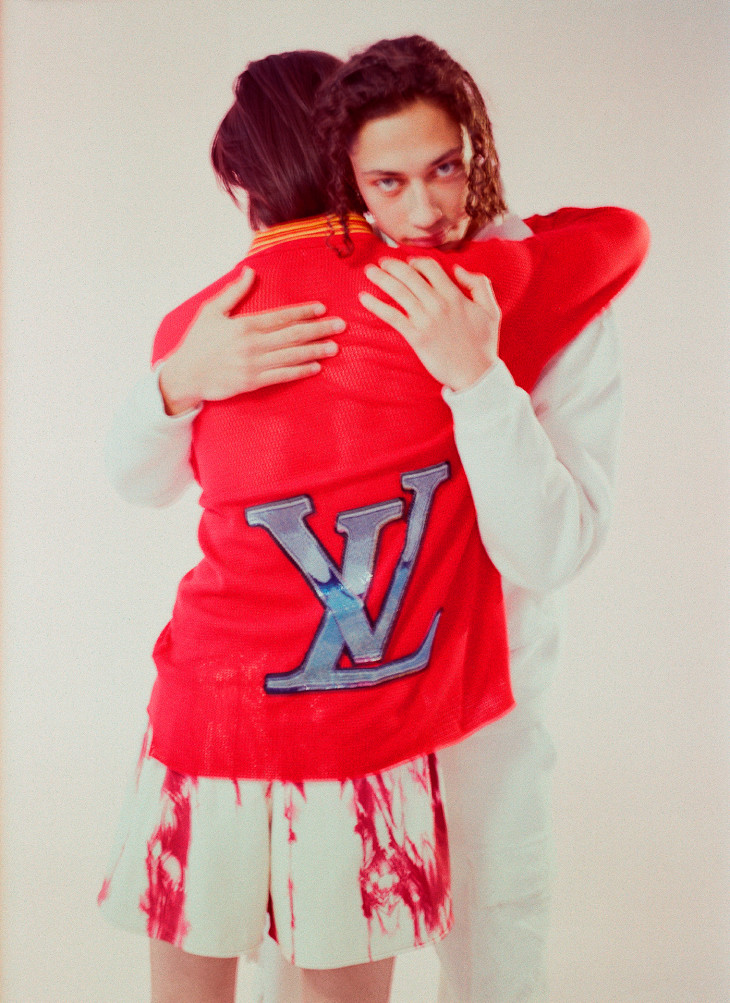
All clothing by Louis Vuitton.
- By
- Jonathan Shia
- Photography by
- Michael James Fox
- Styling by
- Mac Huelster
Models: Max Fieschi at Wilhelmina Models and Nico Geyer at Fusion Models. Grooming by Thomas Dunkin at Bridge Artists. Photographer’s assistant: Andrew Blumenthal. Stylist’s assistant: Jermaine Daley. Casting by Jonathan Shia. Shot at Slate Studios, New York.
Menswear's Major Moves
It is often said that the only constant in fashion is change—which has never been truer than in the last few years, as the industry has been reinventing itself to tackle issues of technology, diversity, and sustainability in fascinating new ways. The current season is one of particularly tectonic shifts in menswear, as new star designers took over the helms of five of the biggest labels around: Kris Van Assche at Berluti, Riccardo Tisci at Burberry, Hedi Slimane at Celine, Kim Jones at Dior Men, and Virgil Abloh at Louis Vuitton. Each is well known from his previous work—Abloh at his own Off-White, Jones at Louis Vuitton, Slimane at Saint Laurent, Tisci at Givenchy, and Van Assche at Dior Homme—and much of the fascination came from anticipating how each would reinterpret his new house’s legacy in keeping with his own artistic vision.
Abloh kicked off the latest round of musical chairs during the Paris men’s shows last June after making headlines as one of the first black designers to take the lead at one of fashion’s largest names. Showing under the full sun on a lengthy runway at the Palais Royal, he presented a rainbow of designs and highlighted fashion’s internationalism by noting the birthplace of each of the models—which included the musicians Kid Cudi, Dev Hynes, Playboi Carti, and Steve Lacy and the artist Lucien Smith—in the program. Taking inspiration from The Wizard of Oz, Abloh showed a more elevated version of the buzzy streetwear he made his name with at Off-White, with florals and oversized outerwear and bags that seemed designed to sell out instantly.
Jones, fresh off seven years overseeing men’s at Louis Vuitton and a showstopping finale starring Naomi Campbell and Kate Moss dressed in the label’s signature monogram back in January, followed up later in the week with his début show at Dior Men, which opened and closed with an actual prince, Nikolai of Denmark. Arranged in stadium seating around an enormous floral sculpture by KAWS, the assembled guests were presented with a sleek and refined vision of pastels, easy suiting, and accessories by LVMH Prize finalists Yoon Ahn of Ambush and Matthew Williams of Alyx. Jones spoke before the show of his desire to infuse a couture sensibility into menswear, which became clear through the intricate handicraft visible in the painstaking toiles and embroideries he showed, bringing fashion’s lesser sex to a new level.
After the summer ended, the fashion calendar turned its attention to women, with Tisci’s first outing at Burberry a highlight of London Fashion Week, where the house is unquestionably the biggest draw. In a shining greenhouse on the outskirts of the city, the Italian designer presented a collection he named Kingdom, bringing to mind the animal and jungle prints that were a mainstay of his time at Givenchy. He split the show in three—Refined, Relaxed, and Evening—and sent out women first and then men, offering a range of designs meant to appeal to all demographics. Burberry staples like the trench coat and the signature check were on view, as well as a new TB monogram print that looked back to the brand’s nineteenth-century founder. Those worried that Tisci’s aggressive athleticism would not mesh well with a brand built on sophistication and heritage could find comfort in his ability to update the elegant staples for a new generation.
Slimane followed up in Paris a few weeks later with perhaps the most radical reinvention, adding menswear to Celine for the first time, perhaps as a trade-off in exchange for the aigu he struck from the label’s name. His rock-and-roll vision was no surprise for the many fans he earned during his years at Dior Homme in the early 2000s, where he revived the skinny suit for a new century, and Saint Laurent, where he replaced Yves’s bohemian sensibility with a grunge mindset. There was plenty of leather, androgyny, and attitude in the collection, which emphatically marked a turn away from the inventive minimalism of Phoebe Philo’s reign.
Berluti is continuing its growth from a shoemaker to a full-fledged fashion house under Van Assche, who replaced Haider Ackermann after three seasons that won notable fans including Timothée Chalamet. Long known as a cool minimalist with an increasingly punk perspective, Van Assche focused on grown-up suiting with crisp cuts and plenty of leather shot in the house’s factory in Ferrara, Italy, in a nod to the century-plus legacy he is looking to reinvent for a new generation.
The men’s market continues to be marked by flux, with a frisson of excitement coming from the uncertainty of where it is headed. Five new designers have taken over five storied houses, recasting the sartorial standards of old for an internet-native age, where attention is fleeting but quality and craftsmanship can still make their mark. Fashion is nothing more than a search for the new and the next, with designers like these serving as guides to help show the way forward.
- By
- Jonathan Shia
- Photography by
- Michael James Fox
- Styling by
- Mac Huelster
Models: Max Fieschi at Wilhelmina Models and Nico Geyer at Fusion Models. Grooming by Thomas Dunkin at Bridge Artists. Photographer’s assistant: Andrew Blumenthal. Stylist’s assistant: Jermaine Daley. Casting by Jonathan Shia. Shot at Slate Studios, New York.
